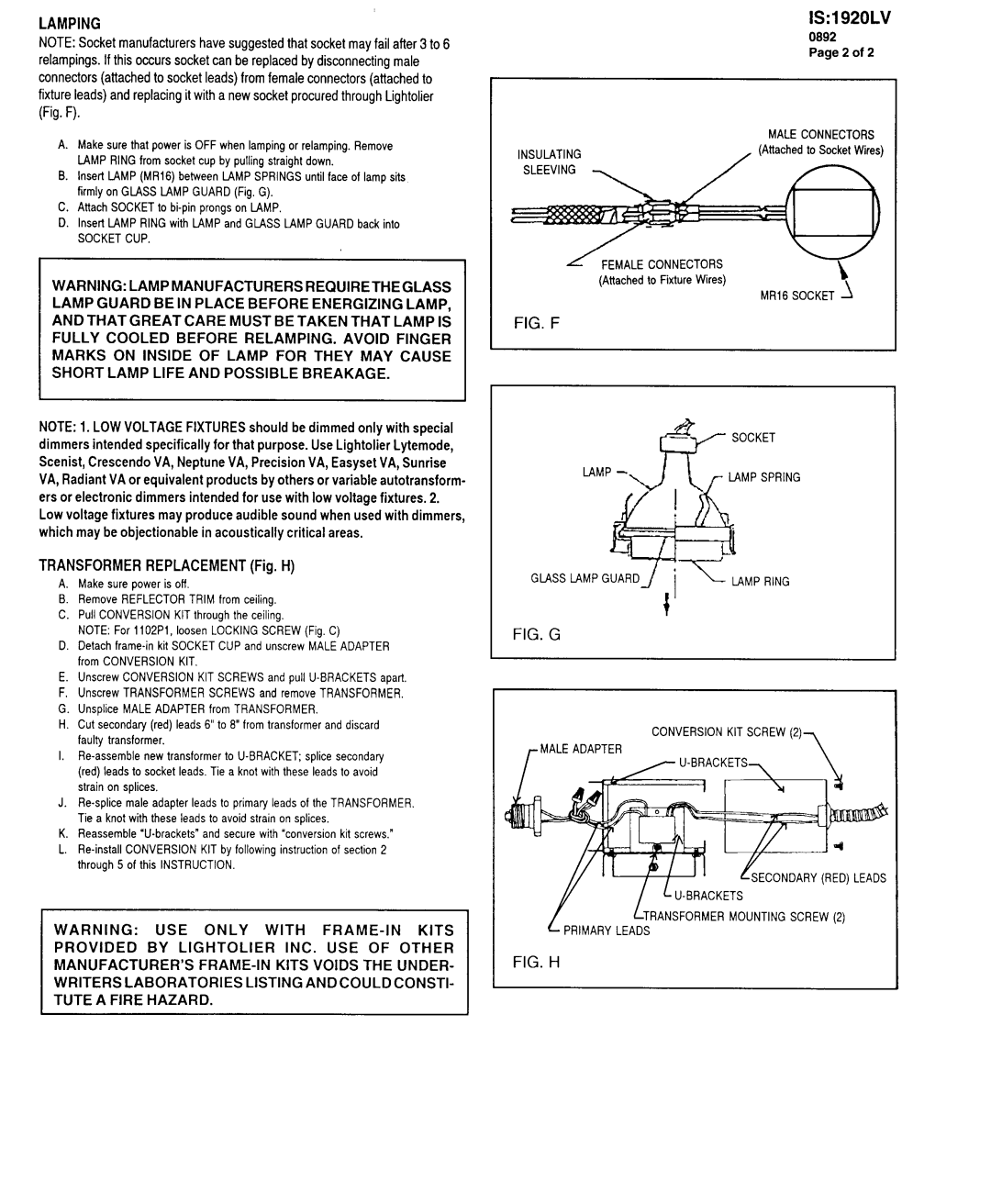1920 specifications
Lightolier, a name synonymous with innovative lighting solutions, made a significant impact in the 1920s as it carved a niche for itself in the burgeoning electric lighting market. Established as a manufacturer of high-quality, aesthetically pleasing lighting fixtures, Lightolier's designs epitomized the Art Deco movement that was gaining momentum during this decade. The blend of functionality and artistic flair in their products captivated homeowners and architects alike.One of the main features of Lightolier's offerings in the 1920s was the emphasis on modern design. The fixtures showcased sleek lines, geometric shapes, and a variety of materials, including polished brass and glass. These elements not only provided practical lighting solutions but also served as decorative accents that complemented the interiors of the time. The use of color was particularly striking, with options ranging from soft pastels to bolder hues, catering to diverse tastes and preferences.
Technologically, Lightolier was at the forefront of integrating advancements in electric lighting into their designs. The introduction of incandescent bulbs allowed for brighter and more efficient illumination, which was a revolutionary step compared to earlier lighting methods. Lightolier's fixtures were designed to maximize the effect of these bulbs, providing even lighting that enhanced the ambiance of any space.
Moreover, Lightolier embraced the trend of adaptability in lighting solutions. Adjustable and directional lighting fixtures became a hallmark of their designs, allowing users to customize light placement according to their needs. This flexibility catered to a growing trend towards multifunctional spaces in homes and commercial settings.
Another characteristic that set Lightolier apart was its commitment to craftsmanship. Each fixture was meticulously crafted, ensuring high-quality finishes and durability. This attention to detail resonated with consumers who valued not only aesthetics but also longevity in their investments.
As the 1920s progressed, Lightolier continued to innovate, merging artistic design with practical functionality. Their contributions to the lighting industry during this era laid the groundwork for future advancements. Lightolier's legacy is a testament to the enduring connection between creativity and technology in enhancing the way we experience light in our environments. With its strong foundation established in the 1920s, Lightolier would go on to influence the lighting design landscape for decades to come.

